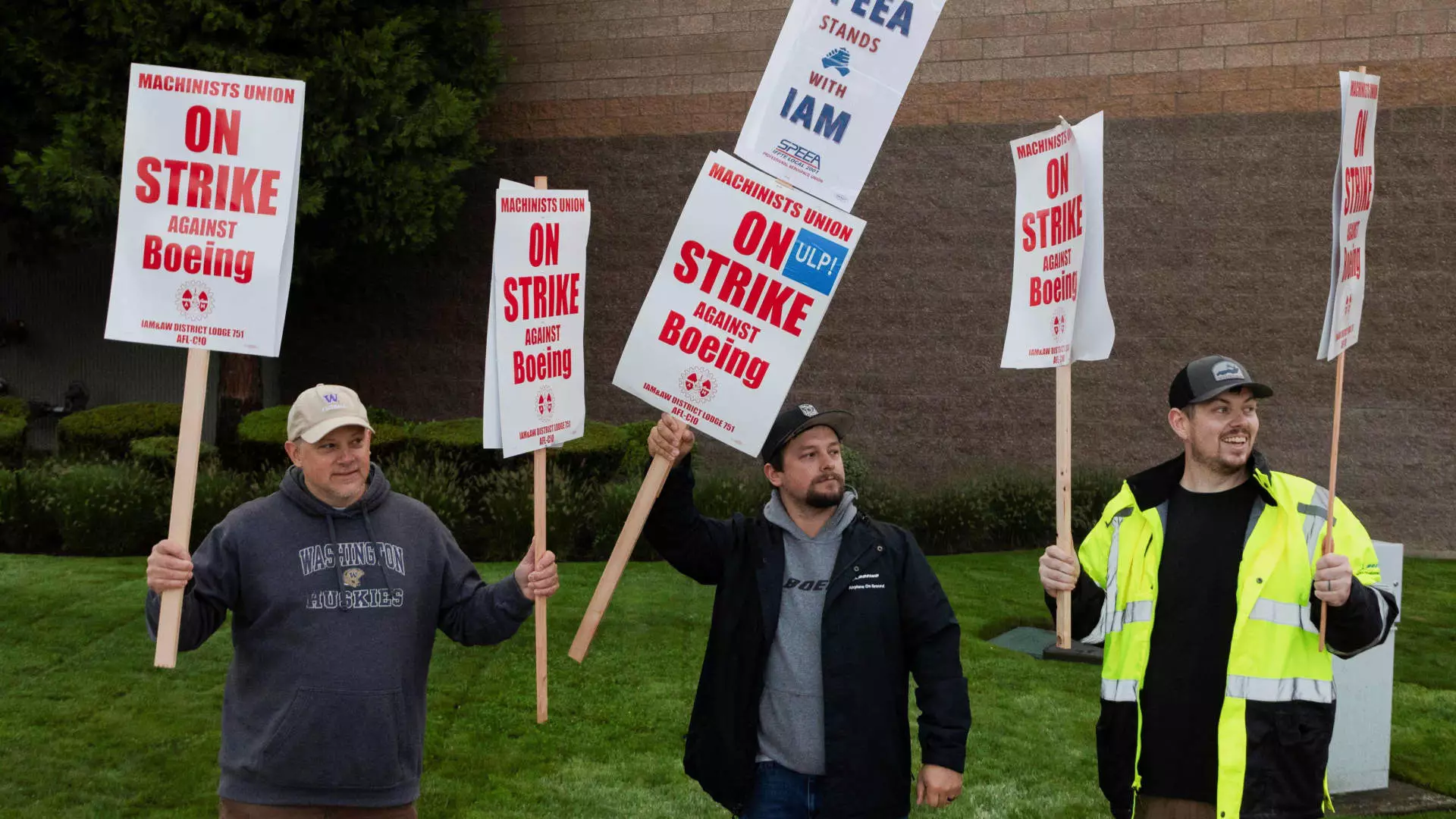In a significant event that could reshape the future of Boeing, a labor strike was initiated after factory workers, represented by the International Association of Machinists and Aerospace Workers, decisively rejected a new labor contract. The implications of this strike are profound, not only impacting production timelines but also posing potential risks to the company’s long-term recovery strategy. As Boeing’s financial health hangs in the balance, the stakes are incredibly high for all parties involved.
The immediate fallout from the labor strike will be felt keenly in Boeing’s production lines, particularly affecting its flagship aircraft, the 737 Max. CFO Brian West articulated the concerns during a recent conference, highlighting that this labor disruption jeopardizes not only delivery schedules but also the financial condition of the aircraft manufacturer. The famous 737 Max, which has historically been Boeing’s best-selling model, is critical to the company’s revenue and future growth. As factory workers walked off the job, the risk of delayed aircraft deliveries looms large, marking a troubling chapter in Boeing’s ongoing saga of recovery in the aerospace sector.
Boeing is already grappling with challenges related to ramping up production and navigating quality control issues in the aftermath of previous safety crises. In that context, this strike exacerbates existing difficulties, hindering the company’s ability to improve operational efficiency. Moreover, analysts have estimated that a prolonged work stoppage—one that persists for even a month—could result in an astronomical $1.5 billion hit, placing additional financial strain on the already beleaguered company.
Financial Ramifications and Market Reactions
The repercussions of the strike extend beyond production, as Boeing’s stock experienced a significant decline following the announcement of the labor walkout. Investor anxiety is evident, with Moody’s placing all credit ratings for Boeing under review for potential downgrade, along with Fitch Ratings warning of the possible fallout from an extended strike. The combination of mounting debt and potential credit downgrades could increase Boeing’s borrowing costs, effectively pricing the manufacturer out of essential financial markets during a critical recovery phase.
Boeing’s commitment to conserving cash during this tumultuous time becomes increasingly important. West emphasized the necessity of minimizing operational costs while aiming to restore negotiations with union leaders, highlighting the urgent need for a resolution that benefits both employees and the company’s broader financial health. However, the rejection of the tentative agreement—which proposed a 25% wage increase over four years—demonstrates the depth of frustration among workers who were seeking more substantial raises in light of soaring living costs.
A Historical Perspective: Strikes and Their Durability
The current labor strike is reminiscent of Boeing’s last major work stoppage in 2008, which endured for nearly two months. Historical patterns indicate that strikes can pose significant operational disruptions, stalling not just production but also innovation and employee morale for organizations like Boeing, which depend heavily on their workforce. The current landscape showcases a company that must navigate both internal worker satisfaction issues and external regulatory pressures, particularly from the Federal Aviation Administration (FAA).
The FAA’s heightened scrutiny on Boeing’s production practices—stemming from a door plug incident involving the 737 Max—underscores the ongoing safety concerns that have plagued the manufacturer. With FAA inspections continuing during the strike, the complexity of restoring public trust becomes yet another layer of challenge for Boeing. The company is now tasked with demonstrating not only financial resilience but also a renewed commitment to safety and quality, both critically necessary for rebuilding its tarnished reputation.
As Boeing faces multifaceted challenges stemming from labor strife and production issues, the path forward is fraught with uncertainty. The company must grapple with labor negotiations that reflect the needs of its workforce while simultaneously addressing market pressures that could derail its recovery efforts. Moving forward, maintaining open lines of communication between management and labor is crucial for fostering trust and ensuring a sustainable operational strategy. The stakes are high, and only through dialogue and careful planning can Boeing hope to emerge from this tumultuous period stronger and more resilient.

